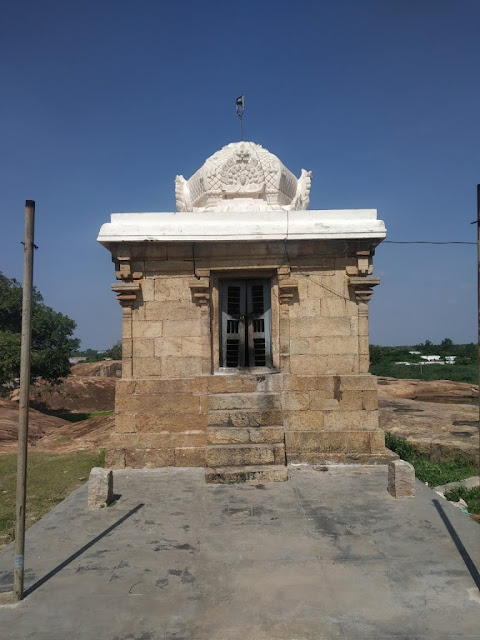Yathothkari Perumal Temple,
Kanchipuram – Connectivity
The temple is located at about 1 Km from Kanchipuram Varadaraja Perumal Temple, 2 Kms from Kanchipuram Bus Stand, 2.5 Kms from Kanchipuram East
Railway Station and 4 Kms from Kanchipuram Railway Station. This temple is located close to Ashtabuja Perumal Temple and situated near Rangaswamy Tank in Chinna Kanchipuram. This temple is located on the way to Varadharaja Perumal Temple from Kanchipuram Bus
Stand. Kanchipuram is located at about 18 Kms from Walajabad, 31 Kms from
Sriperumbudur, 40 Kms from Chengalpattu, 60 Kms from Chennai Airport, 67 Kms
from Mahabalipuram and 72 Kms from Chennai.
By Road:
Kanchipuram is most easily accessible by road. The
Chennai – Bangalore National Highway, NH 4 passes the outskirts
of the city. Daily bus services are provided by the Tamil Nadu State
Transport Corporation to and from Chennai, Bangalore, Villupuram,
Salem, Tirupati, Thiruthani, Vellore, Tiruvannamalai,
Coimbatore, Tindivanam and Pondicherry. There are two major bus
routes to Chennai, one connecting via Poonamallee and the other
via Tambaram.
The Tamil Nadu state government operated transport
corporation runs buses from Kanchipuram to most major towns in Tamil Nadu.
Buses from Chennai leave for Kanchipuram every fifteen minutes from the
Koyambedu interstate bus terminal. There is also an air-conditioned bus service
numbered Z576 from 5.00 AM to 6.00 PM, which departs from the T-Nagar bus
terminal every hour. Buses from Bangalore leave for Kanchipuram seven times a
day.
By
Train:
The city is also connected to the railway network
through the Kanchipuram railway station. The Chengalpattu – Arakkonam
railway line passes through Kanchipuram and travellers can access services to
those destinations. Daily trains are provided to Pondicherry and Tirupati,
and there is a weekly express train to Madurai and a bi-weekly
express train to Nagercoil. Two passenger trains from both sides of
Chengalpattu and Arakkonam pass via Kanchipuram.
By Air:
Nearest domestic as well as international airport
is Chennai International Airport.

.jpg)
.jpg)

.jpg)

.jpg)
.jpg)
.jpg)
.jpg)
.jpg)
.jpg)

.jpg)
.jpg)
.jpg)
.jpg)
.jpg)
.jpg)
.jpg)
.jpg)

.jpg)
.jpg)
.jpg)
.jpg)

.jpg)
.jpg)
.jpg)
.jpg)



.jpg)




.jpg)


.jpg)
.jpg)

